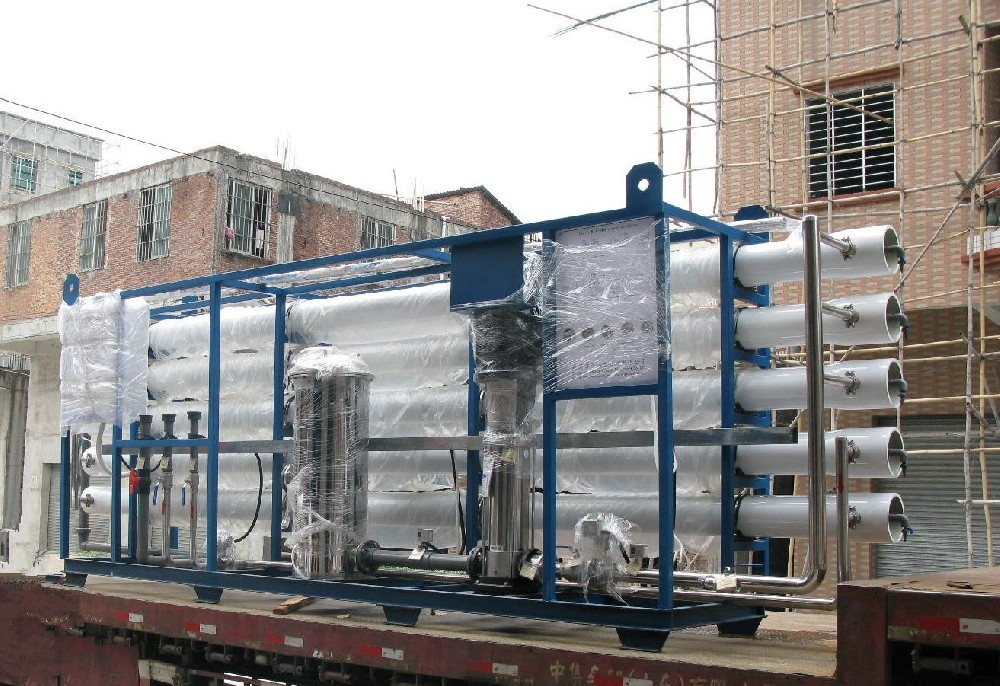
Wechat/Whatsapp:
+8613798883773

Wechat/Whatsapp:
+8613798883773
HYWATER Reverse Osmosis plant/system


Common problems of reverse osmosis membrane during equipment use 1) Scaling of reverse osmosis membrane First of all, when the reverse osmosis equipment is in operation, fresh water will be produced during the low-pressure flushing process, and the concentration of the water on both sides will naturally increase, which will also lead to the concentration of salt. . Secondly, uneven dosing is also an important reason for fouling of reverse osmosis membranes. If the leakage of the antiscalant device is serious, it is likely to affect the dosing amount of the antiscalant. The staff did not pay enough attention during the operation, and in many cases, the reverse osmosis membrane was not flushed in time during the shutdown process, which would also lead to fouling of the reverse osmosis membrane. 2) Oxidation of reverse osmosis membrane Oxidation of reverse osmosis membrane is also a phenomenon that is prone to occur in the process of using reverse osmosis membrane, and the occurrence of oxidation will inevitably affect the performance of the membrane. For example, in the pretreatment stage, excessive residual chlorine in the influent or excessive dosage of oxidizing fungicides, such as chlorine dioxide, potassium permanganate, ozone, hydrogen peroxide, etc., will cause oxidation. First, ensure that the reverse osmosis membrane The influent water does not contain residual chlorine. Secondly, when taking sterilizing measures, a suitable bactericide should be selected. When cleaning the reverse osmosis equipment, it should be operated separately from other configuration systems. 3) Rupture of reverse osmosis membrane If the reverse osmosis membrane encounters back pressure at the water production end, it will cause problems such as diaphragm separation and damage. If the back pressure at the water production end is not prevented, a bursting membrane can be installed on the water production side. When the back pressure of the permeated water end rises to the bursting limit pressure of the bursting disc, the bursting disc will be damaged, and only a new bursting disc can be replaced. 4) Reverse osmosis membrane fouling After the reverse osmosis equipment has been in operation for a period of time, the pollutants in the water will pollute the filtration equipment. RO membrane is the core technology of reverse osmosis work. In order to quickly determine whether the reverse osmosis device is polluted, it is necessary to grasp the pollution phenomenon and status of reverse osmosis. which. The common ones are sediment deposition, colloid deposition, organic matter deposition or biological pollution. 5) Reverse osmosis membrane being compacted When the membrane is compacted, it usually shows a decrease in water production and an increase in salt rejection. During normal operation, the diaphragm is rarely likely to compact. However, obvious compaction tendency may occur under the following conditions: excessive water pressure, high temperature, water hammer, when there is air in the reverse osmosis system, the high-pressure pump is started, and the pressure of the high-pressure pump rises too fast, which is harmful to The RO membrane is easy to cause a strong impact, and water hammer will occur, which will easily damage the reverse osmosis membrane. After the membrane elements are compacted, the damaged membrane elements must be replaced in time, or additional membrane elements need to be added at the back of the system. More inquiries related to reverse osmosis membrane during equipment use please contact: Mob& Wechat& WhatsApp: (+86)13544774483 Email: sales010@water-sy.com We will provide high-quality, all-round comprehensive professional services for project consulting, system design, manufacturing, installation and commissioning, personnel training, etc
